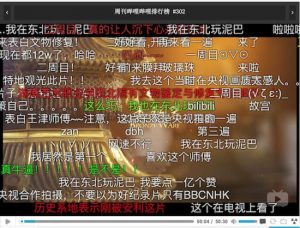
By Titus Tan
Cyberbullying is a relatively new form of bullying that is perpetrated through electronic devices (Smith et al., 2018). It has several different characteristics compared with traditional face-to-face bullying: it is not restricted to time and space, its perpetrators operate semi-anonymously, it has potentially innumerable audiences (Grigg, 2010), physical strength is no longer important due to the lack of physical contact (Nocentini et al., 2010), one can be perpetrator and victim at the same time (especially among youth), it is not always intentional (Yang and Salmivalli, 2013), and finally it is more lasting since cyberbullying contents stay online if not deleted (Deschamps and McNutt, 2016). Cyberbullying in Canada is prevalent: it is estimated thirty-five percent of Canadians have been involved with cyberbullying. Considering the problem of non-disclosure, this is likely an underestimation (Hemphill et al., 2012).
A plethora of researches reveal that cyberbullying results in a number of serious harms to its victims including depression, marginalisation, antisocial behaviours, suicide (Deschamps and McNutt, 2016), anxiety, lower self-esteem (Hertz et al., 2013), loss of appetite, sleeplessness, feelings of social isolation (Sourander et al., 2010) impacts on academic performance, maladaptive behaviours (aggression, smoking, drinking and shoplifting) and absenteeism (Schenk and Fremouw, 2012). Therefore, although there is no offence specifically named cyberbullying in Canadian Criminal Code, a number of offences that break down cyberbullying attempt to stop this harmful phenomenon (Canadian Department of Justice, 2013): Bill C-13 (Protecting Canadians from Online Crime Act) which came into force on March, 2015 criminalises nonconsensual distribution of intimate images through Section 162 of Canadian Criminal Code, and extends Section 372 which prohibits “false messages, indecent [and] harassing telephone calls [which] intend to [harass,] alarm or annoy a person or [which repeatedly] makes indecent communication” to be applicable for “electronic communication” (language slightly modified by the author) (Coburn et al., 2015). Since almost all cases of cyberbullying involve at least one of “harassment, alarming, annoyment, indecency and distribution of intimate images” (Coburn et al., 2015), almost all cases of cyberbullying could potentially be crimes. Therefore, the prevention of cyberbullying is a criminological concern.
Most scholarly literature on cyberbullying primarily focuses on its perpetrators and victims, while overlooking another role at play, its bystanders (Deschamps and McNutt, 2016), or those who witness cyberbullying taking place between the perpetrators and victims (Cleemput et al., 2014). This is partly because a number of scholars still attempt to understand cyberbullying with the theories of traditional face-to-face bullying (see for example: Cleemput et al., 2014, p.1). Those theories typically identify three typical features of traditional face-to-face bullying, namely “intent, repetition and power imbalance” (Smith et al. 2008), none of which touches on the role of bystanders. While it may be true for traditional face-to-face bullying that bystanders are not very helpful for explaining such phenomenon, it is not to be taken granted for cyberbullying. On the contrary, I argue that from a media studies perspective, bystanders assume an unexpected pivotal position in forming the phenomenon of cyberbullying.
The limited researches around bystanders usually study their reactions to witnessing cyberbullying that are generally divided into three categories, namely ignoring, helping victims or joining in perpetrators (see for example: Cleemput et al., 2014). A consensus of their research results is that the majority of bystanders simply ignore their witnessed cyberbullying. Researchers deliberate a number of reasons for their inaction. The result for the most common reason selected is rather consistent among these researches: the majority of bystanders think, “it is none of my business” (see for example: Cleemput et al., 2014), followed by relatively less common reasons including “I could get bullied myself”, “I did not know how to help the victims” and “I cannot help the victims” (Cleemput et al., 2014).
However, these reasons, for me, are not actual reasons but rationalisations. If they were to be legitimate reasons, researchers have to assume that bystanders by default are strict moral abiders who tend to help victims, should they not be hindered by the foregoing “reasons”, and that inaction is an anomaly that absolutely requires reasons to help explain. Therefore, these researches could be considered as a form of “moral kidnapping” (“Dao De Bang Jia”, a Chinese concept which means to use others’ morals as leverages to serve our purposes) that allows the scholars to assume random bystanders to be strict moral abiders and to force reasons out of their inaction. This misunderstanding of bystanders’ role is shared by almost all scholarly literature around bystanders.
In reality, as the research results themselves suggest, the majority of bystanders do not intend to interfere in the first place, “It is none of my business” (Cleemput et al., 2014). If bystanders are not to be expected to be “hibernating messiahs” for cyberbullying, instead from a media study perspective, they can be viewed as the audiences of a mass communication event named cyberbullying. Perpetrators as media content producers always cater to bystanders’ needs as their audiences, otherwise for the lack of audiences, their purposes, whatever they may be, cannot be met through cyberbullying. Moreover, statistics show that this potential audience is immerse: an Ipsos poll finds that around twenty percent of Canadian teenagers have witnessed cyberbullying (2013).
To parallel from journalism, a specific type of mass communication event, cyberbullies can be seen as journalists, and victims their stories of interest. Similar to journalists who are expert in digging out the most sensational spectacles, the question that cyberbullies consciously or unconsciously prioritises is: what is “spreadworthy”? In other words, cyberbullies always bear in mind bystanders’ potential interests, sometimes even before intending to cause harm to their victims. This is supported by the finding that cyberbullying among youth more often than not is not intentional, nor do they evaluate them as morally serious as adults (Talwar et al. 2014). In extreme cases, the intention to cause harm may have never even crossed cyberbullies’ mind, all they have in mind may just be: “Owh! This is interesting, let me put it online!”. That is to say, cyberbullies may detect the “spreadworthiness” of certain contents before, if ever, realising the harm of spreading. Although no scholar has reported such extreme cases so far (possibly because no one has thought of this way), impulsivity is known to have a high positive correlation with joining in cyberbullying (Erreygers et al., 2016).
David S. Byers finds that bystanders’s justifications of whether to help victims are often based on victims’ social identities such as race, class, gender identity and sexual orientation (2016). He offers the following example: Tyler Clementi’s sexual encounter with another man is videotaped by his roommate Dharun Ravi and posted on Twitter and Facebook (Foderaro, 2010). Consciously or unconsciously, Ravi knew that homosexual videoes were going to become a “hit”. Many bystanders indeed wrote on Ravi’s page to express their homophobic disgust. Had Clementi been a heterosexual, Ravi would have been much less motivated to videotape, since there would have been nothing sensational with which Ravi could attract bystanders, even if Ravi intended to harass Clementi.
Katrien Van Cleemput et al finds that almost two thirds of victims are schoolmates of bystanders (2014). In other words, contrary to the false impression brought by news reports of rare but sensational cases, Canadian youth are far more likely to be cyberbullied by people they frequent in real life than random strangers with superior technology skills who are located far away from their targets (Deschamps and McNutt, 2016). Although perpetrators who frequent victims in real life are much easier to have intent to cause harm to them (e.g. they get into a conflict of romantic relationships) than random strangers, they are also more easy to be identified and stopped, should victims do not have reasons for concealing their victimisation.
However, Qing Li’s survey shows that over forty percent of Canadian youth do not tell anyone about their victimisation, and nighty percent do not inform an adult (2006). This is because of another important facet of the question, what is “spreadworthy”?: what can spread longer? Consciously or unconsciously, I suggest that perpetrators who frequent victims in real life know they are easy to get caught. Therefore, they need to find cyberbullying contents that are unlikely to be revealed by victims, such as their innermost secrets (especially concerning sexualities). More sophisticated perpetrators act as vigilantes and suggest that for some (especially moral) reasons, their victims deserve to be cyberbullied. To illustrate with Clementi’s case, Clementi only told a selected few about his victimisation because he had not come out as a homosexual by the time of cyberbullying, and those who wrote on Ravi’s page to express disgust obviously think that Clementi had deserved to be exposed (Byers, 2016).
Most current countermeasures of cyberbullying (criminological aspect) fall into the category of educating perpetrators, victims and bystanders (especially students, parents and teachers in school settings) about the harms of cyberbullying. For example, after the suicide of victim Rehteah Parsons, the third cyberbullying suicide in Nova Scotia, the provincial government requires schools to collect incident data and monitor [(cyber-)]bullying activities with the new Bill 30 (Promotion of Respectful and Responsible Relationships Act). Besides, in early 2014, Canadian Federal Government introduced “Stop Hating Online” four-million-dollar national campaign distributing a variety of television and internet advertisements against cyberbullying among youth (Deschamps and McNutt, 2016). The main rationale behind this is that since researches arrive at a consensus that empathy has a high positive correlation with bystanders’ helping victims (Cleemput et al., 2014), it is expected that education aimed at inducing empathy leads to more bystanders’ helping victims (Davis and Nixon, 2012).
While there is little to no research on the efficacy of these educational countermeasures, I list several reasons why I suspect that they may not be as effective. Although it is well researched that empathic bystanders are very likely to help victims (Cleemput et al., 2014), it is still unclear whether education is able to effectively make the majority of indifferent bystanders become empathetic. Furthermore, if the majority of bystanders already feel indifferent about helping victims, it is highly doubtful whether they would take educational countermeasures seriously, if not feeling reluctant or even a complete waste of their time. Besides, Cyberbullying is not limited to the underaged. For example, almost eighty percent of university students in Columbia have witnessed cyberbullying (Sarmiento et al., 2019), a percentage way higher than any percentage documented for youth age groups. Since the older people are, the more reluctant they feel about “being educated”, I am pessimistic about the efficacy of educational countermeasures on people who have already gone through teenagehood. Finally, if roughly thirty-five percent of Canadian youth has witnessed cyberbullying (Hemphill et al., 2012), an abundance of other Canadians may have never witnessed cyberbullying. Unlike advertising something that concerns every Canadian such as wearing helmets for cyclers, the cost efficiency of four million dollars (Deschamps and McNutt, 2016) for advertising anti-cyberbullying that only concerns some Canadian is rather low.
From a media studies perspective, like all mass communication events, cyberbullying has three crucial components, namely perpetrators (media producers), victims and bystanders (media consumers) and the internet (means of communication), and respectively three general types of countermeasures, namely stopping perpetrators, redirecting bystanders and victims and monitoring the internet. All ongoing education countermeasures belong to the first two categories, and are expected to be ineffective as explained above. Indeed, the first two categories of countermeasures are usually effective when the media producers or consumers are known or at least highly predictable, which is clearly not the case for cyberbullying. This leaves us only the last type of countermeasure, monitoring the internet.
While it is unrealistic to expect random bystanders to help victims, most media technology companies already have paid monitors to watch for contents posted on their sites. Still, it is unrealistic to monitor all contents, nor are most contents culpable of cyberbullying. For example, although Bill C-13 criminalises nonconsensual distribution of intimate images (Coburn et al., 2015), consensual distribution of sexual contents are permitted by the Canadian Criminal Code, which makes it almost impossible for monitors to filter out nonconsensual ones from an ocean of sexual contents online. However, Cleemput et al.’s research shows that 4.6 percent of youth have helped victims and almost one fifth of youth claimed that their inaction had been because “I did not know how to help the victim” (2014). These research results implies that a small amount of bystanders already with high empathy wants to help. Plus. Cleemput et al. also find that part of the reasons why some bystanders did not know how to help the victim is due to technical difficulties (2014). Indeed, from my personal experience with Facebook, Facebook does not highlight the section where I can report suspicious contents. Therefore, should media technology constantly highlight their report functions and take down cyberbullying contents where they deem necessary, perpetrators will automatically back off for their inability to reach a broad audience.
Cyberbullying, or bullying with electronic communication, is a new form of bullying prevalent in Canada. Since it can result in a series of serious harms, Canadian Criminal Code attempts to stop it through a number of offenses. Therefore, criminology studies such as this one aims at finding feasible ways of its prevention. In current scholarly literature, almost all scholars either downplay the role of bystanders in forming cyberbullying, or potentially mistake bystanders’ role as strict moral abiders. From a media studies perspective, I have demonstrated bystanders’ pivotal position as audiences of perpetrators, since perpetrators always need to cater to their audiences to maintain the further spreading of their cyberbullying contents. Finally, unlike most ongoing educational countermeasures that are expected to be ineffective, I suggest that cyberbullying should be stopped by setting barriers to its means of communication, that is monitoring the internet by paid monitors of technology companies looking more carefully into reported contents on their sites.
Bibliography
Bullies Taking to Social Networking as Teens Become More Mobile. Retrieved from https://www.ipsos.com/en-ca/bullies-taking-social-networking-teens-become-more-mobile
Byers, D. S. (2016). Recognition of Social Pain among Peers: Rethinking the Role of Bystanders in Bullying and Cyberbullying. Smith College Studies in Social Work, 86(4), 335–354. doi: 10.1080/00377317.2016.1222771
Cleemput, K. V., Vandebosch, H., & Pabian, S. (2014). Personal characteristics and contextual factors that determine “helping,” “joining in,” and “doing nothing” when witnessing cyberbullying. Aggressive Behavior, 40(5), 383–396. doi: 10.1002/ab.21534
Coburn, P. I., Connolly, D. A., & Roesch, R. (2015). Cyberbullying: Is Federal Criminal Legislation the Solution? Canadian Journal of Criminology and Criminal Justice, 57(4), 566–579. doi: 10.3138/cjccj.2014.e43
Cyberbullying and non-consensual distribution of intimate … (n.d.). Retrieved from https://www.justice.gc.ca/eng/rp-pr/other-autre/cndii-cdncii/pdf/cndii-cdncii-eng.pdf
Deschamps, R., & Mcnutt, K. (2016). Cyberbullying: Whats the problem? Canadian Public Administration, 59(1), 45–71. doi: 10.1111/capa.12159
Erreygers, S., Pabian, S., Vandebosch, H., & Baillien, E. (2016). Helping behavior among adolescent bystanders of cyberbullying: The role of impulsivity. Learning and Individual Differences, 48, 61–67. doi: 10.1016/j.lindif.2016.03.003
Foderaro, L. W. (2010, September 29). Private Moment Made Public, Then a Fatal Jump. Retrieved f rom https://www.nytimes.com/2010/09/30/nyregion/30suicide.html
Grigg, D. W. (2010). Cyber-Aggression: Definition and Concept of Cyberbullying. Australian Journal of Guidance and Counselling, 20(2), 143–156. doi: 10.1375/ajgc.20.2.143
Hemphill, S. A., Kotevski, A., Tollit, M., Smith, R., Herrenkohl, T. I., Toumbourou, J. W., & Catalano, R. F. (2012). Longitudinal Predictors of Cyber and Traditional Bullying Perpetration in Australian Secondary School Students. Journal of Adolescent Health, 51(1), 59–65. doi: 10.1016/j.jadohealth.2011.11.019
Hertz, M. F., Donato, I., & Wright, J. (2013). Bullying and Suicide: A Public Health Approach. Journal of Adolescent Health, 53(1). doi: 10.1016/j.jadohealth.2013.05.002
Kyriacou, C., & Zuin, A. (2018). Cyberbullying bystanders and moral engagement: a psychosocial analysis for pastoral care. Pastoral Care in Education, 36(2), 99–111. doi: 10.1080/02643944.2018.1453857
Li, Q. (2006). Cyberbullying in Schools. School Psychology International, 27(2), 157–170. doi: 10.1177/0143034306064547
Nocentini, A., Calmaestra, J., Schultze-Krumbholz, A., Scheithauer, H., Ortega, R., & Menesini, E. (2010). Cyberbullying: Labels, Behaviours and Definition in Three European Countries. Australian Journal of Guidance and Counselling, 20(2), 129–142. doi: 10.1375/ajgc.20.2.129
David, S., Nixon, C. (2012). Empowering bystanders. In Cyberbullying prevention and response: expert perspectives. London: Routledge.
Sarmiento, A., Herrera-López, M., & Zych, I. (2019). Is cyberbullying a group process? Online and offline bystanders of cyberbullying act as defenders, reinforcers and outsiders. Computers in Human Behavior, 99, 328–334. doi: 10.1016/j.chb.2019.05.037
Schenk, A. M., & Fremouw, W. J. (2012). Prevalence, Psychological Impact, and Coping of Cyberbully Victims Among College Students. Journal of School Violence, 11(1), 21–37. doi: 10.1080/15388220.2011.630310
Smith, P. K., Mahdavi, J., Carvalho, M., Fisher, S., Russell, S., & Tippett, N. (2008). Cyberbullying: its nature and impact in secondary school pupils. Journal of Child Psychology and Psychiatry, 49(4), 376–385. doi: 10.1111/j.1469-7610.2007.01846.x
Talwar, V., Gomez-Garibello, C., & Shariff, S. (2014). Adolescents’ moral evaluations and ratings of cyberbullying: The effect of veracity and intentionality behind the event. Computers in Human Behavior, 36, 122–128. doi: 10.1016/j.chb.2014.03.046
Yang, A., & Salmivalli, C. (2013). Different forms of bullying and victimization: Bully-victims versus bullies and victims. European Journal of Developmental Psychology, 10(6), 723–738. doi: 10.1080/17405629.2013.793596









